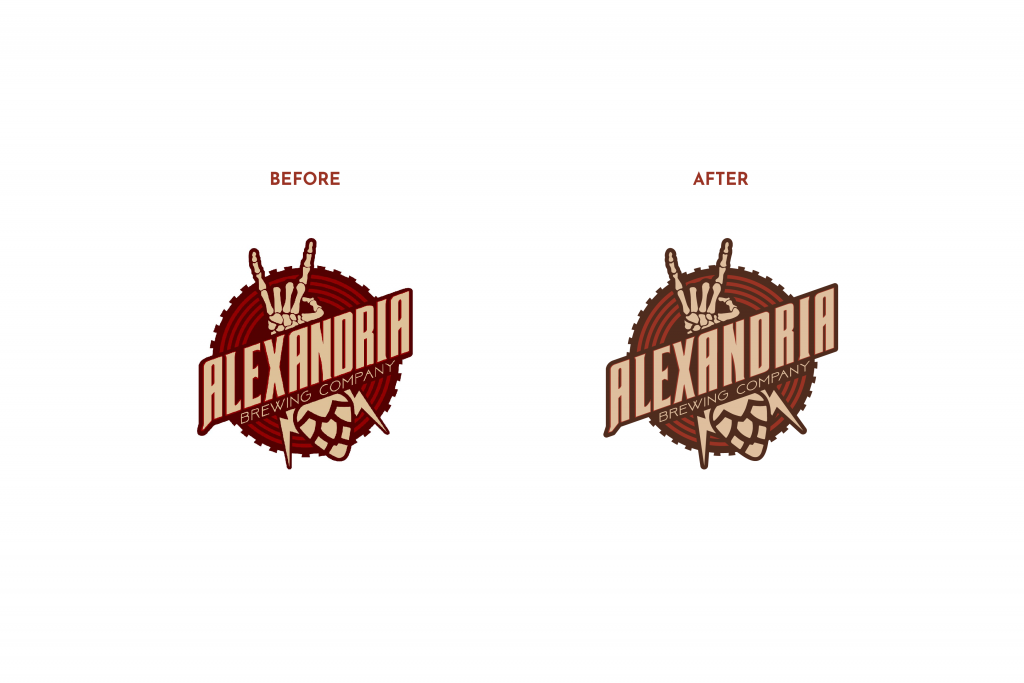I created the Alexandria Brewing Company logo back in 2016 before I understood correct graphic design practice. Recently, I went back and recreated this one the right way.
Changes before and after:
- Raster to vector: raster graphics are made up of pixels while vector graphics are made up of straight lines communicated through code. While raster images are ideal for photographs, vector files have the distinct advantage of being infinitely scalable – an SVG may be as small as a pen tip or as large as a billboard. There is never a loss of quality nor pixelation. Even better is the file size. Most simple vector graphics are about 10 times smaller than their raster counterparts (this is ideal for web design where page load speed matters).
- Kerning: the letter spacing within a word or wordmark is known as kerning. Over the length of a paragraph, kerning may be indistinguishable, unnoticed, or unimportant; however, when it comes to large wordmarks and logo designs central to a brand’s reputation, the letter spacing becomes critical for legibility and balance. In this example, the kerning was originally defaulted to the computer’s basic setting. You’ll notice that the Alexandria looks too wide in the A-L-E-X and too narrow in the A-N-D-R-I. The second version’s kerning is much more even. Just remember, logical geometry can lie. Always go with spacing that looks best to the eye.
- HEX color to Pantone color: there is a discrepancy between what a computer can display in RGB (additive color) and what a printer can print in CYMK (subtractive color). The computer monitor can show millions of colors at any level of brightness or saturation. In contrast, tangible print is limited to a humbler appearance. Pantone is a commonly accepted set of print colors (in the thousands). These universally recognized swatches can be be ordered as individual inks for dyes ensuring that a color looks consistent across a variety of mediums. Coca-cola is infamous for its exclusive Coke Pantone. Here, we’ve updated our color palette to pantone to ensure compatibility across all platforms.
